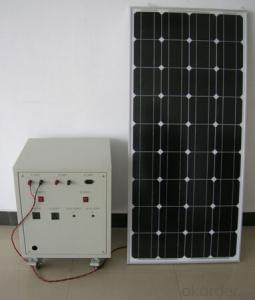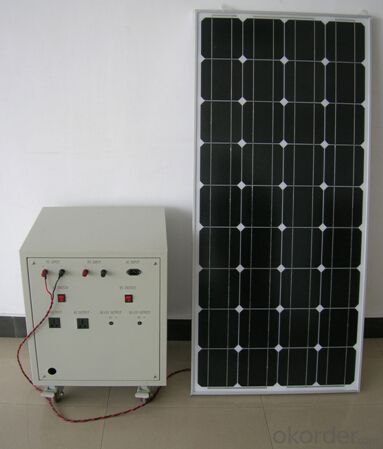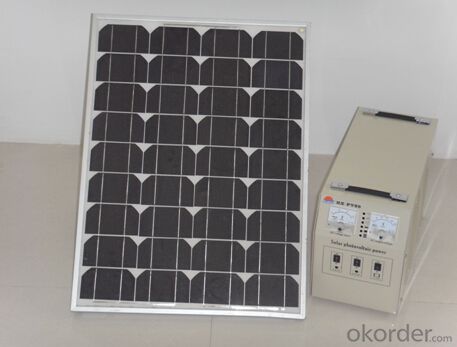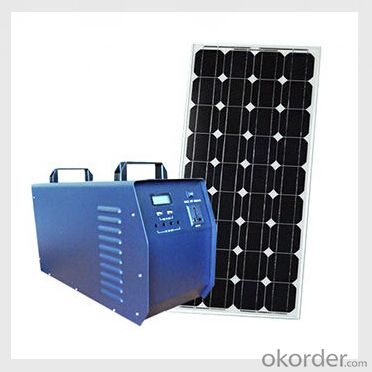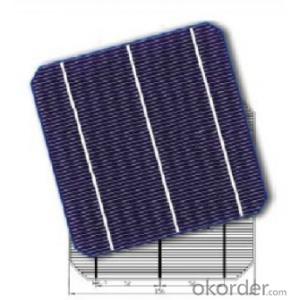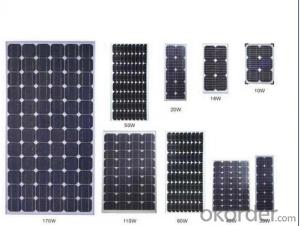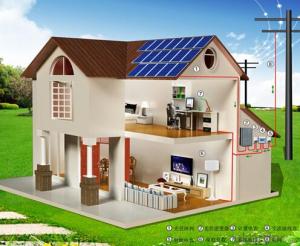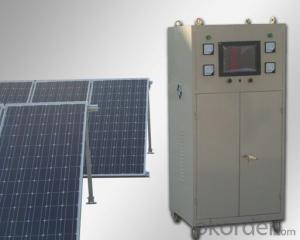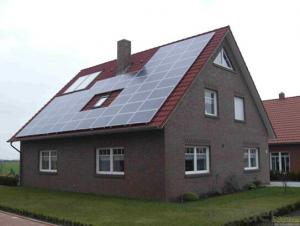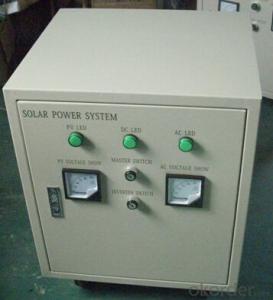CNBM Solar Roof Solar System 8000W with Solar Cells and Panels Popular in Africa
- Loading Port:
- Shanghai
- Payment Terms:
- TT OR LC
- Min Order Qty:
- 1 PCS
- Supply Capability:
- 30000 PCS/month
OKorder Service Pledge
OKorder Financial Service
You Might Also Like
Introduction of Solar Home System
Silicon remains the most popular material for solar cells, including these types:
Monocrystalline or single crystal silicon
Multicrystalline silicon
Polycrystalline silicon
Amorphous silicon.
The absorption coefficient of a material indicates how far light with a specific wavelength (or energy) can penetrate the material before being absorbed. A small absorption coefficient means that light is not readily absorbed by the material. Again, the absorption coefficient of a solar cell depends on two factors: the material making up the cell, and the wavelength or energy of the light being absorbed.
The band gap of a semiconductor material is an amount of energy. Specifically, the band gap is the minimum energy needed to move an electron from its bound state within an atom to a free state. This free state is where the electron can be involved in conduction. The lower energy level of a semiconductor is called the "valence band." The higher energy level where an electron is free to roam is called the "conduction band." The band gap (often symbolized by Eg) is the energy difference between the conduction band and valence band.
Solar cell material has an abrupt edge in its absorption coefficient; because light with energy below the material's bandgap cannot free an electron, it isn't absorbed.
Working Principle of Solar Roof System
The stand alone Solar Home System is an off-grid solar system which uses batteries to store the solar energy. Stand alone solar system solutions design for those who are not able or willing to connect to electricity grid.
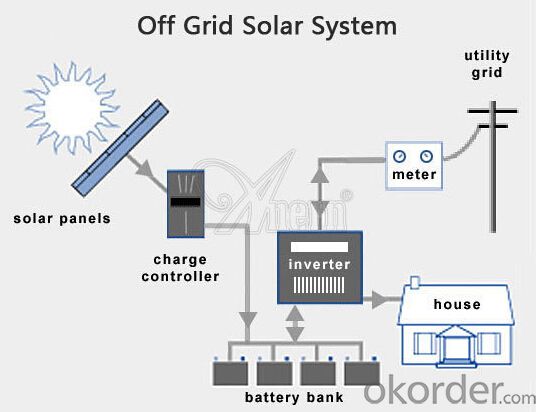
Specification of Solar Home System
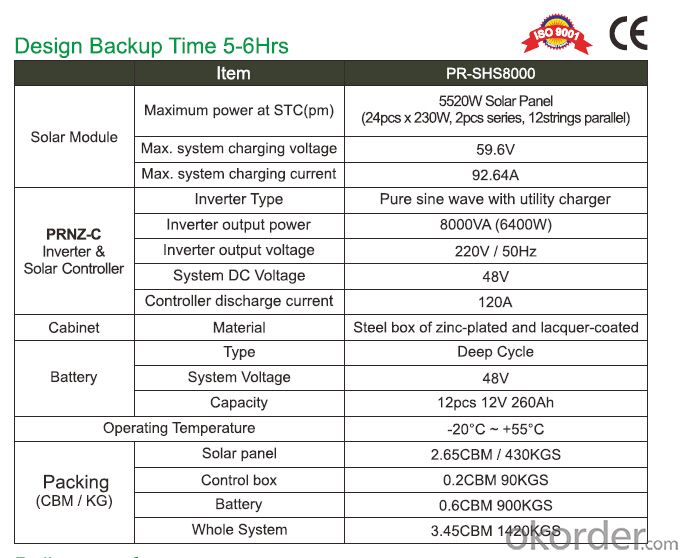
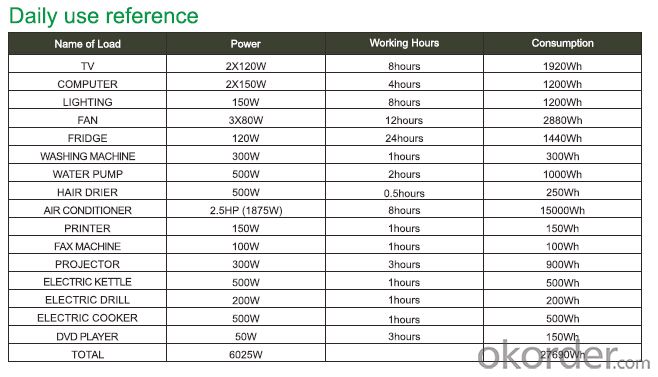
Product Features of Solar Home System
1. Off grid solar power system is mainly used for application with relatively-small power consumption, and the areas have no grid network coverage, or grid power is unstable or outage condition.
2. It’s composed of solar panels, hybrid solar inverter, battery bank, solar panel mounting racks, and other accessories required fora complete home solar power system.
3. The battery bank gives a stable power output to the solar inverter which converts DC to AC to power loads, and provides power backup in rainy or cloudy days.
4. The solar panels generate electricity at daytime and charge the battery bank.
5. The off grid home solar power system provides grid power bypass in case of battery power shortage when sunshine is not enough.
6. All the off grid home solar power system configurations are worked out by scientific calculation and design.

Advantage of Our Solar Home System
1 Excellent Performance: Our Solar Home System is composed by Brand Standard Kits with high quality. Our solar system has the advantage of high efficiency and stable operation. We can ensure our product with a long life period.
2. Small Orders Accepted: We can accept small orders as our customer’s trial order.
3. Warehouse: We have warehouse overseas which can bring great convenience to our customer to pick up the products.
Terms and Conditions
1. Trade terms: FOB Shanghai
2. Payment terms: 30% T/T, balanced before shipment/ LC at sight before shipment. Actual Terms can be negotiated for big order.
3. Package: Exported standard package suitable for tough handling and sea transport.
4. Delivery: Goods to be ready within 10~30 days depending on order quantity.
5. Warranty: 10 years for solar panel, 2 years for controller/inverter/battery.
FAQ
Q: Could you introduce the background of your company?
A: We are a Group corp. with 1GW capacity in China, which is Okorder’s registered VIP Supplier, possess Financial Service from Okorder.com.
Q: Required mainly certificates (CE&IEC/TUV/RoHS)?
A: Our products are certificated by CE RoHS, IEC, ISO, TUV, UL etc.
Q: Your main exported market is?
A: Main markets of our products is: South-east Asia, Mid-east, Arica, East Europe and Latin America.
- Q: Can I buy solar cells easily online?
- Yes, you can.
- Q: How do solar cells handle hail or other severe weather conditions?
- Solar cells are designed to withstand severe weather conditions, including hail. They are made with durable materials such as tempered glass or other shatter-resistant materials that can withstand impacts. Additionally, solar panels undergo rigorous testing to ensure their ability to withstand hailstorms and other harsh weather conditions.
- Q: What information can I get from the Internet about the solar cell modules? Such as what it is? How it is made?
- Solar cell module is an assembly of photovoltaic cells. It can be used as a component of a larger photovoltaic system in order to generate electricity. A photovoltaic system usually includes an array of solar panels and an inverter. It may also sometimes contain a battery or solar tracker as well as interconnection wiring.
- Q: Can solar cells be used in space satellites?
- Yes, solar cells can be used in space satellites. In fact, they are the most common source of power for satellites in space. Solar cells convert sunlight directly into electricity, making them an ideal and efficient source of renewable energy in the space environment.
- Q: Can solar cells be used on rooftops?
- Yes, solar cells can be used on rooftops. In fact, rooftop solar panels are a popular choice for residential and commercial buildings as they provide an efficient way to harness solar energy and generate electricity.
- Q: Can solar cells be used in satellite or space exploration missions?
- Yes, solar cells can be used in satellite or space exploration missions. In fact, they are extensively utilized in these missions to provide power to spacecraft and satellites due to their ability to convert sunlight into electricity efficiently.
- Q: How long does it take to make a solar cell?
- If you decide to make it by yourself, it will take you very long.
- Q: What is the role of bypass diodes in solar cell systems?
- The role of bypass diodes in solar cell systems is to minimize the impact of shading or partial module failure. They allow current to bypass the shaded or malfunctioning cells, preventing them from reducing the overall performance of the system.
- Q: Can solar cells be used in hot climates?
- Yes, solar cells can be used in hot climates. In fact, solar panels often perform better in hotter temperatures as they can convert more sunlight into electricity. However, it is essential to consider the heat management of the solar panels to ensure their efficiency and longevity in extreme heat conditions.
- Q: What is the impact of solar cell installations on greenhouse gas emissions?
- Solar cell installations have a significant positive impact on reducing greenhouse gas emissions. By harnessing clean and renewable energy from the sun, solar cells help to displace the use of fossil fuels, which are major contributors to greenhouse gas emissions. This transition to solar power leads to a decrease in carbon dioxide and other harmful emissions, helping to mitigate climate change and improve air quality.
Send your message to us
CNBM Solar Roof Solar System 8000W with Solar Cells and Panels Popular in Africa
- Loading Port:
- Shanghai
- Payment Terms:
- TT OR LC
- Min Order Qty:
- 1 PCS
- Supply Capability:
- 30000 PCS/month
OKorder Service Pledge
OKorder Financial Service
Similar products
Hot products
Hot Searches
Related keywords
